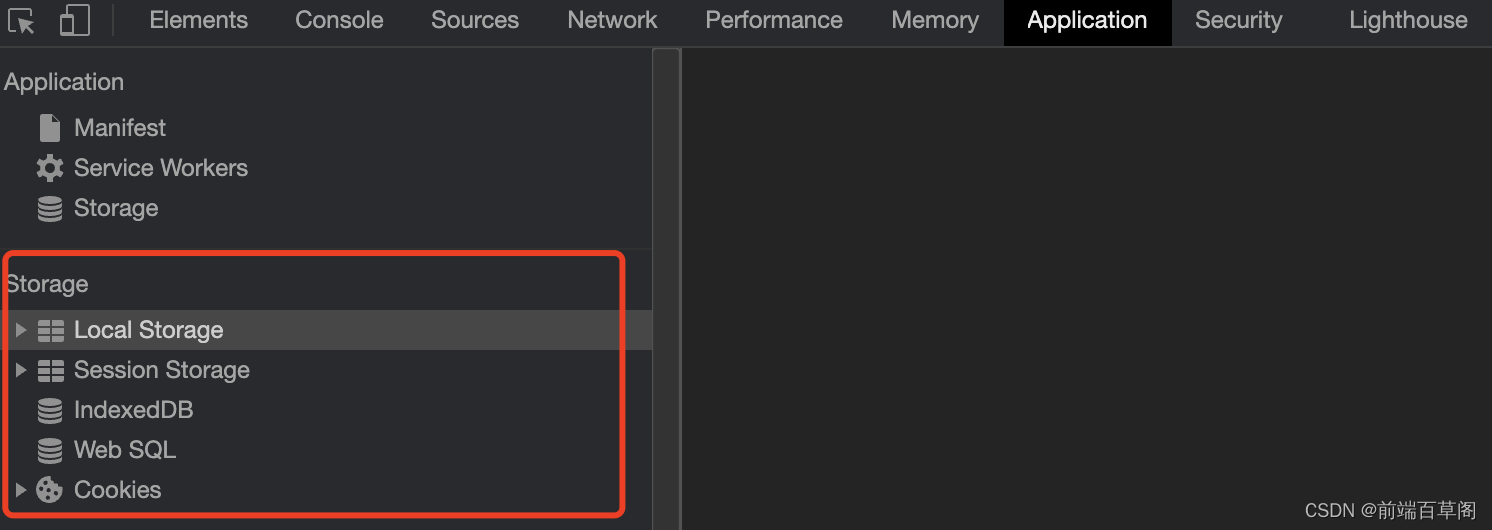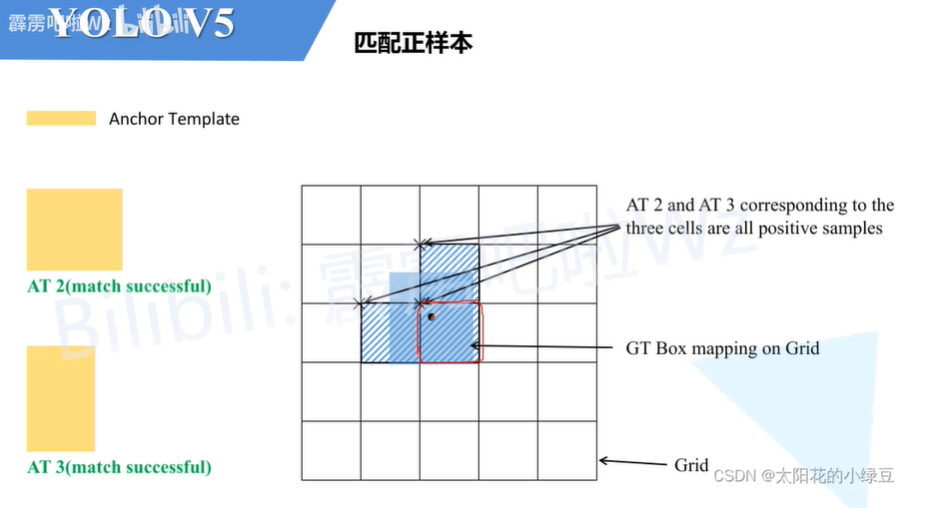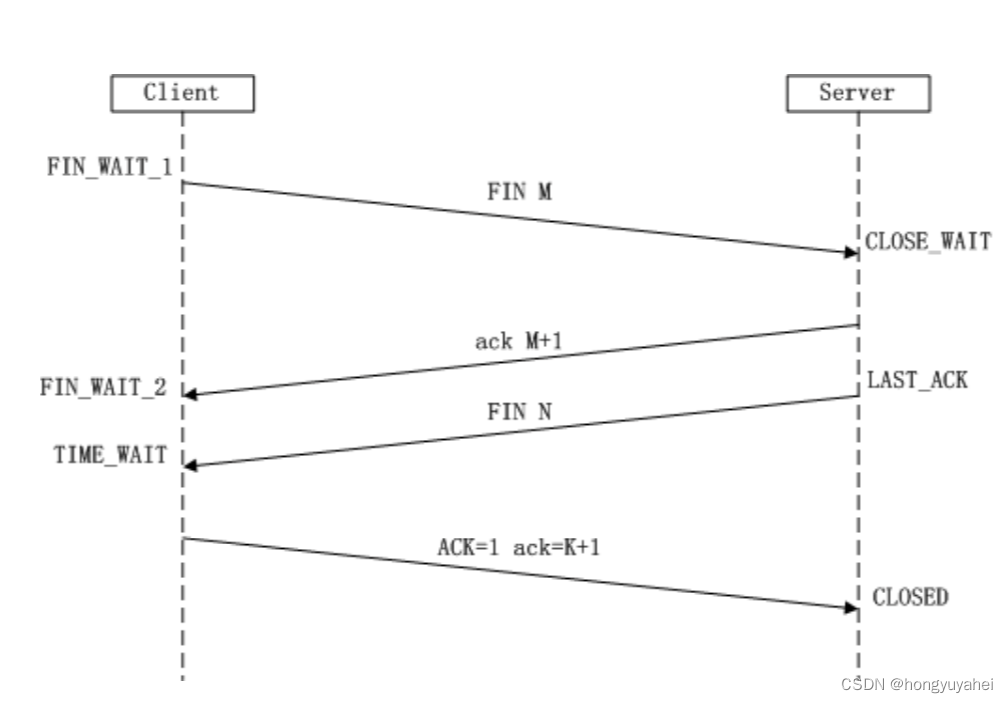(1)介绍
缨帽变换(Kirchhoff Transform,K-T变换) 是一种在遥感图像处理中常用的技术,它可以有效地提取地物的空间特征和频谱信息。本文将对遥感缨帽变换的提出者、原理方法、公式、现在的发展、作用进行详细介绍,并附有相应的图解。
(2)利用程序结果进行出图展示
TM影像的前三个分量的物理意义:
●亮度:TM的6个波段的加权和,反映了总体的反射值。
●绿度: 反映了近红外与可见光部分的差值,绿色生物量的特征。
●湿度:反映了可见光和近红外(1-4波段)与较长的红外(第5, 7波段)的差
值,定义为湿度的根据是第5,7两个波段对土壤湿度和植物湿度最为敏感
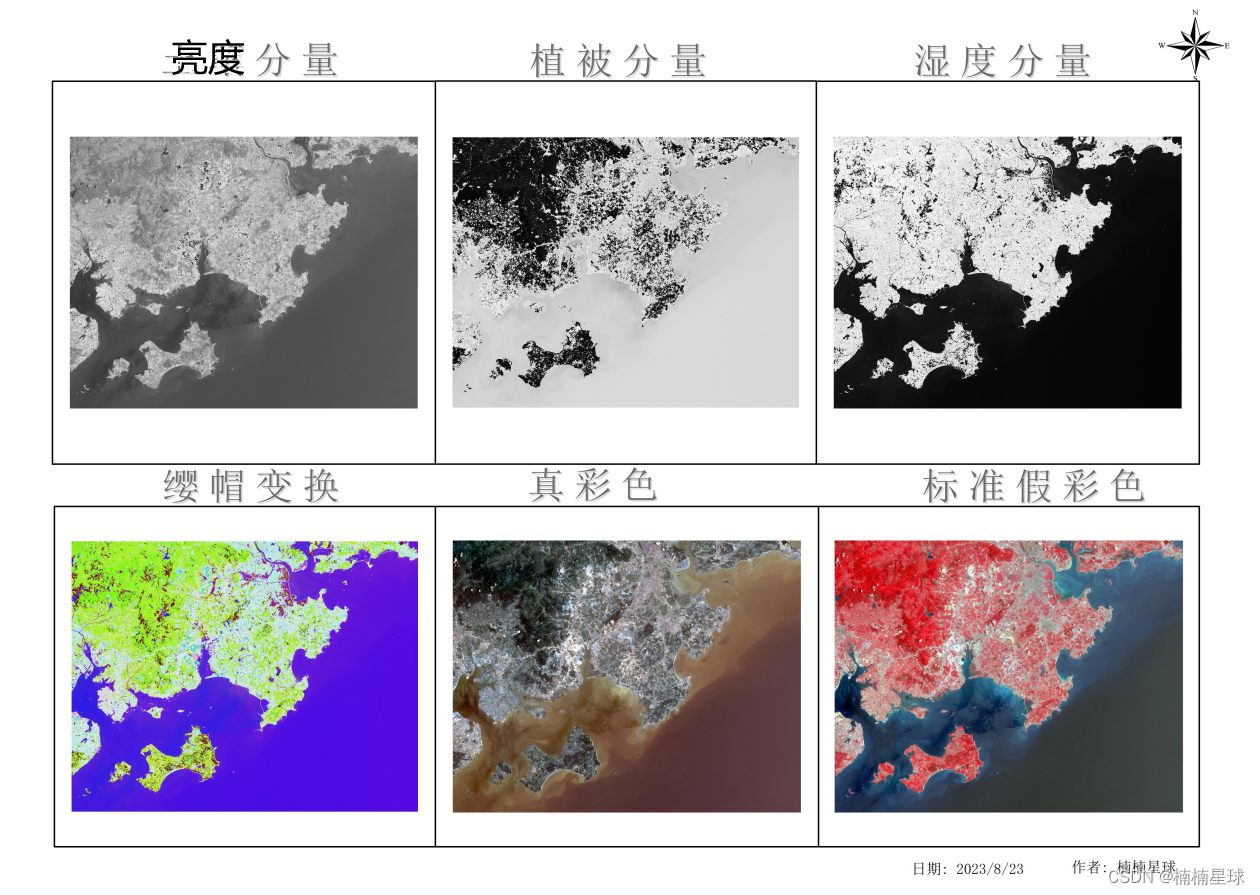
(3)缨帽(K-T)变换变换原理详解
一、提出者
缨帽变换是由德国地球物理学家Gottfried Kirchhoff在19世纪50年代首次提出的。他将电磁波在介质中传播的过程进行了详细研究,并提出了一种计算电磁波在介质表面反射和透射的方法,即遥感缨帽变换。
二、原理方法
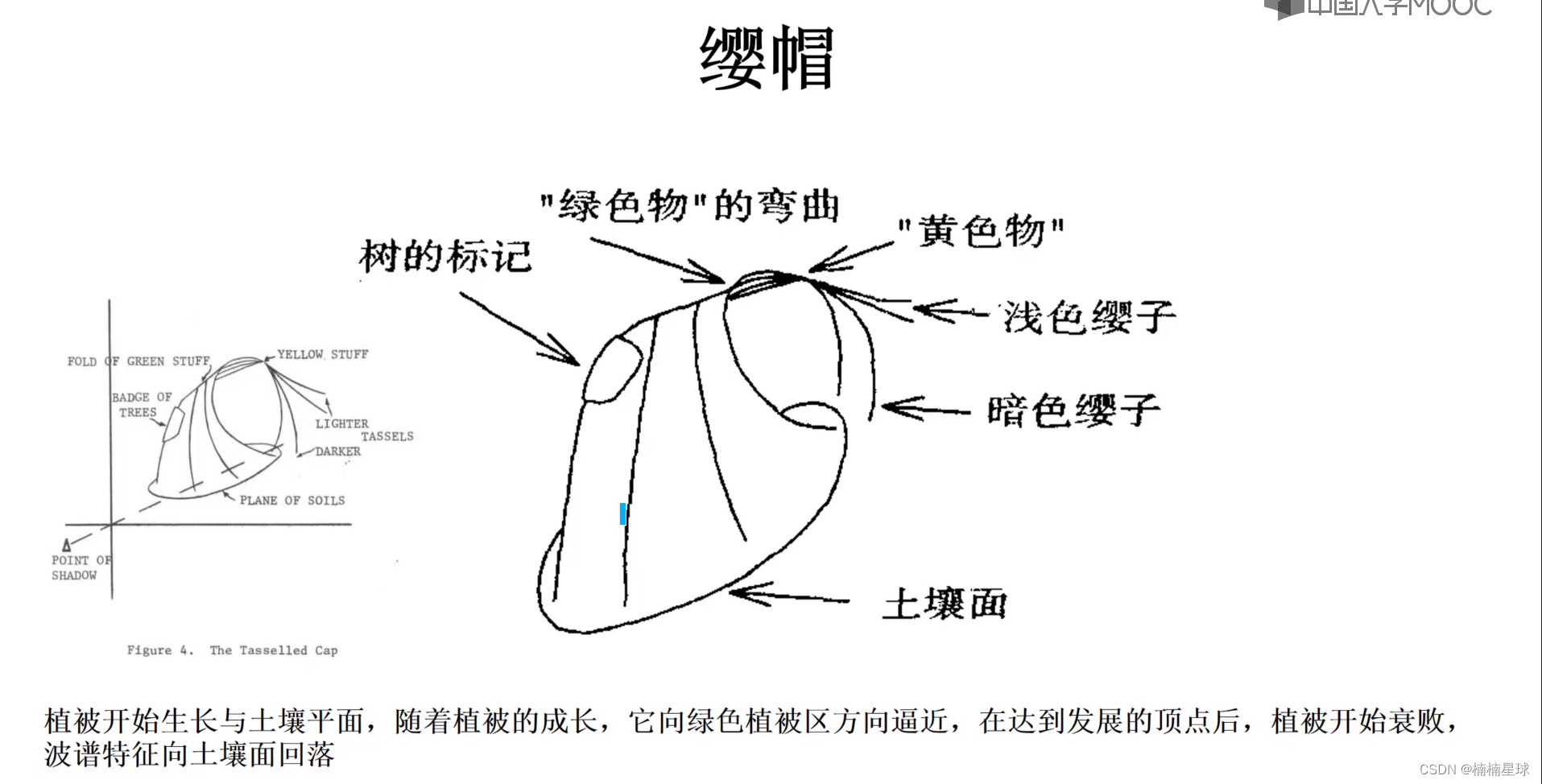
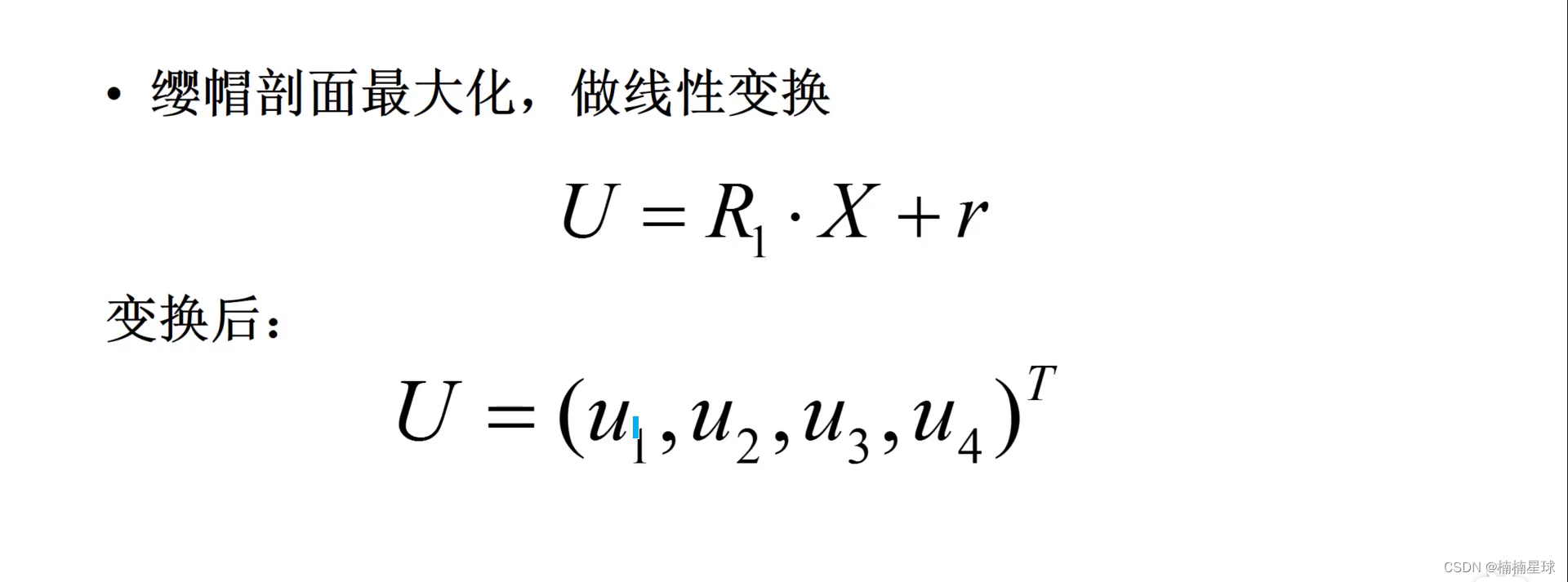
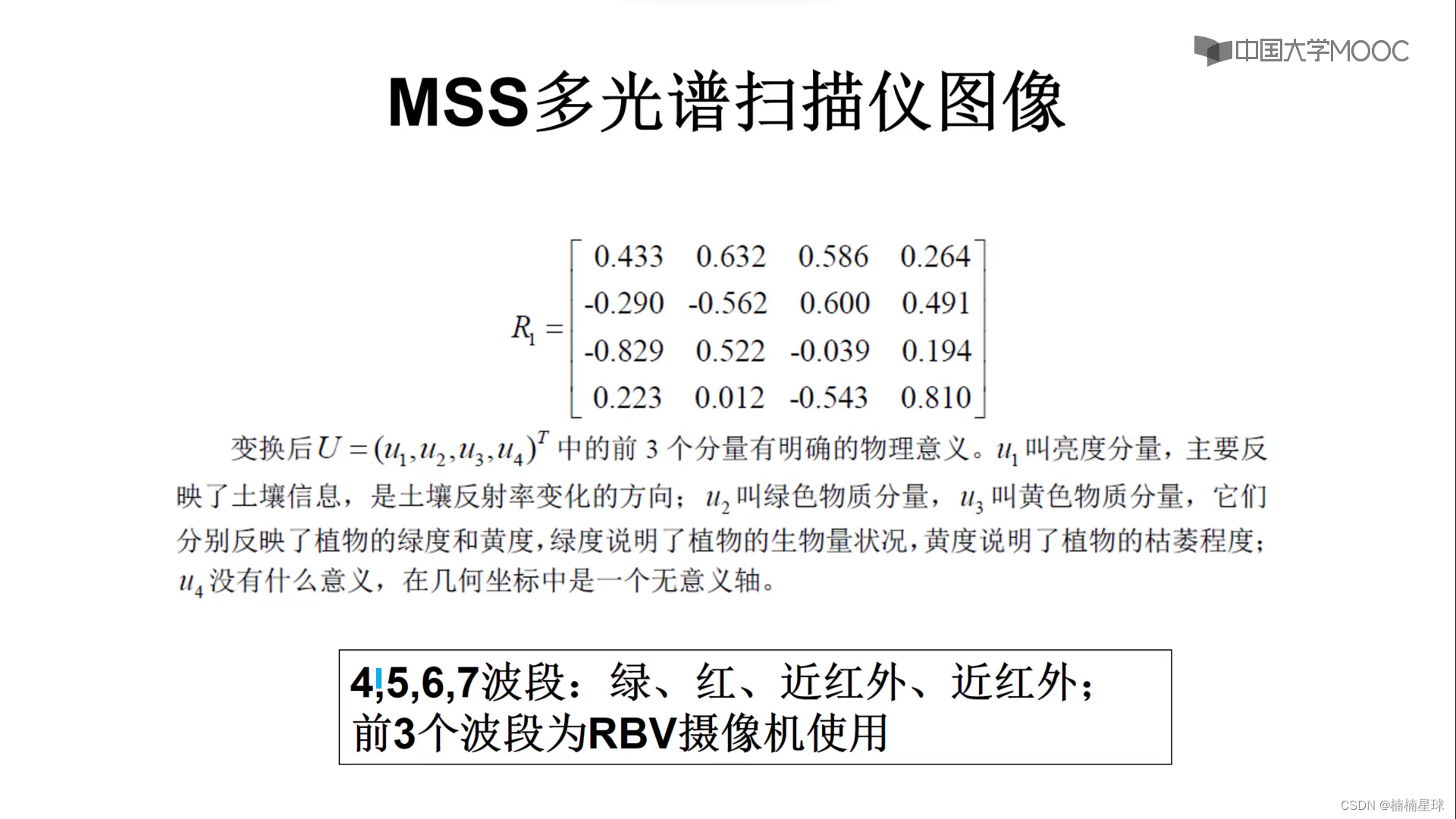
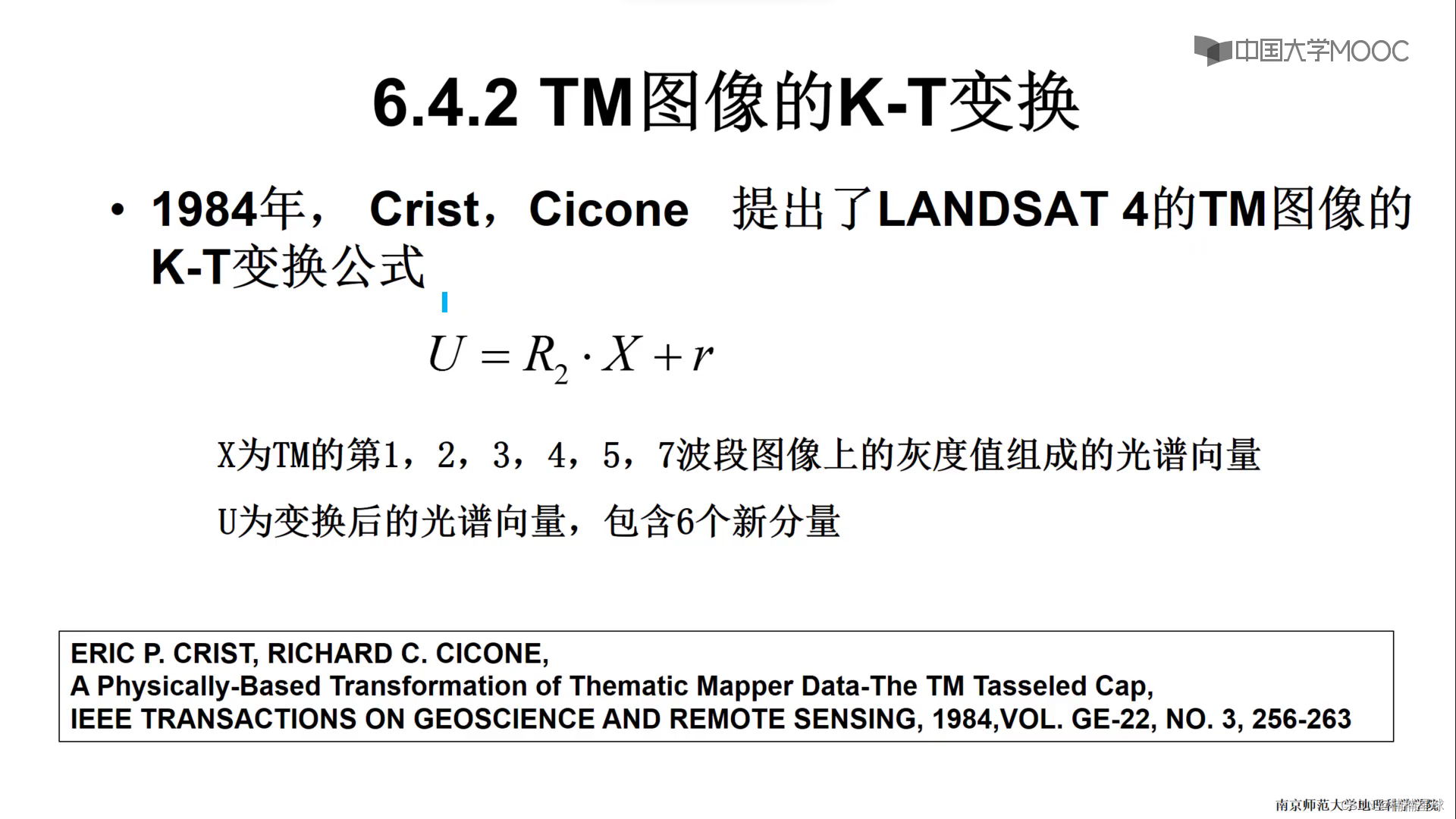
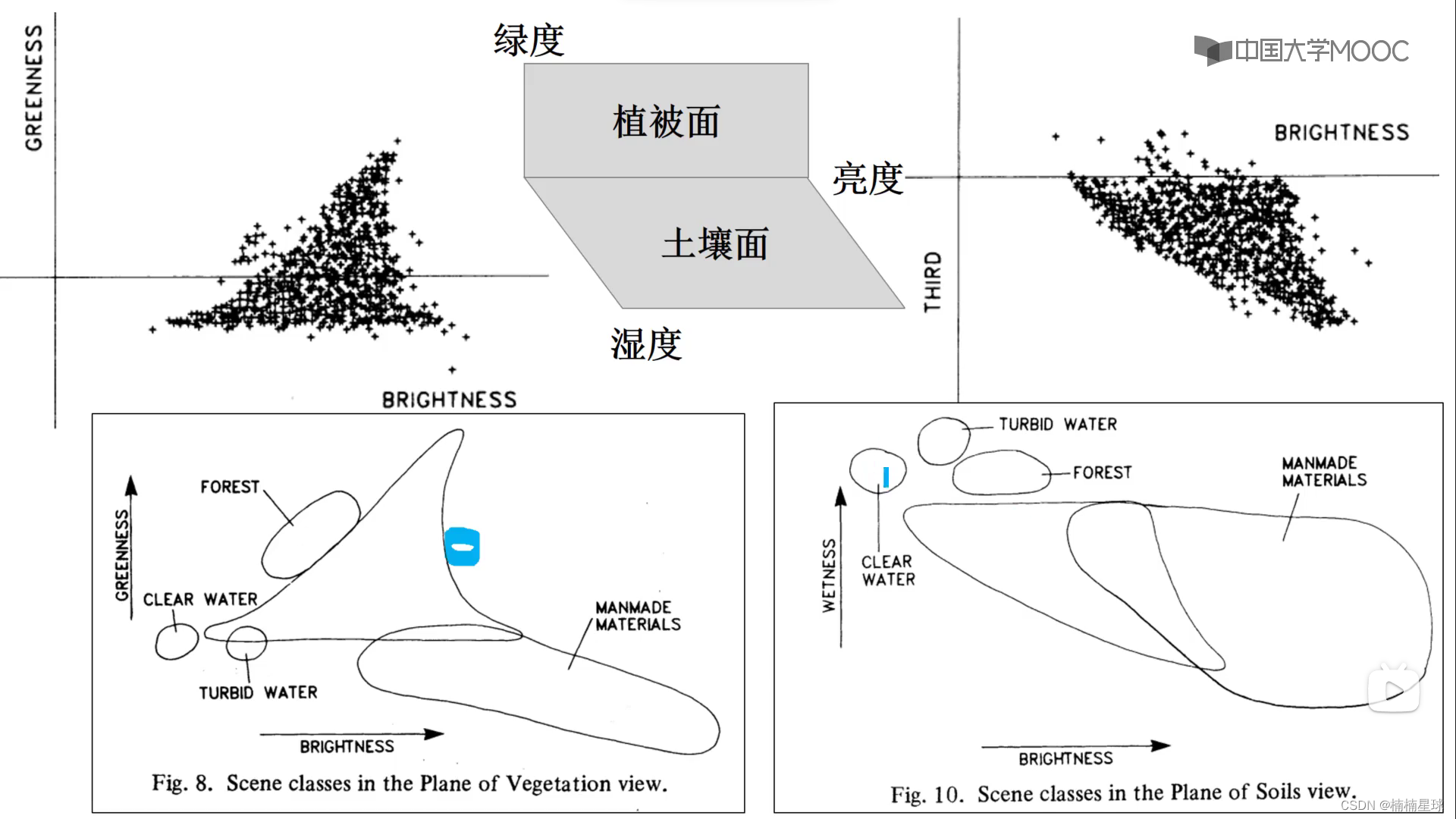
三、公式
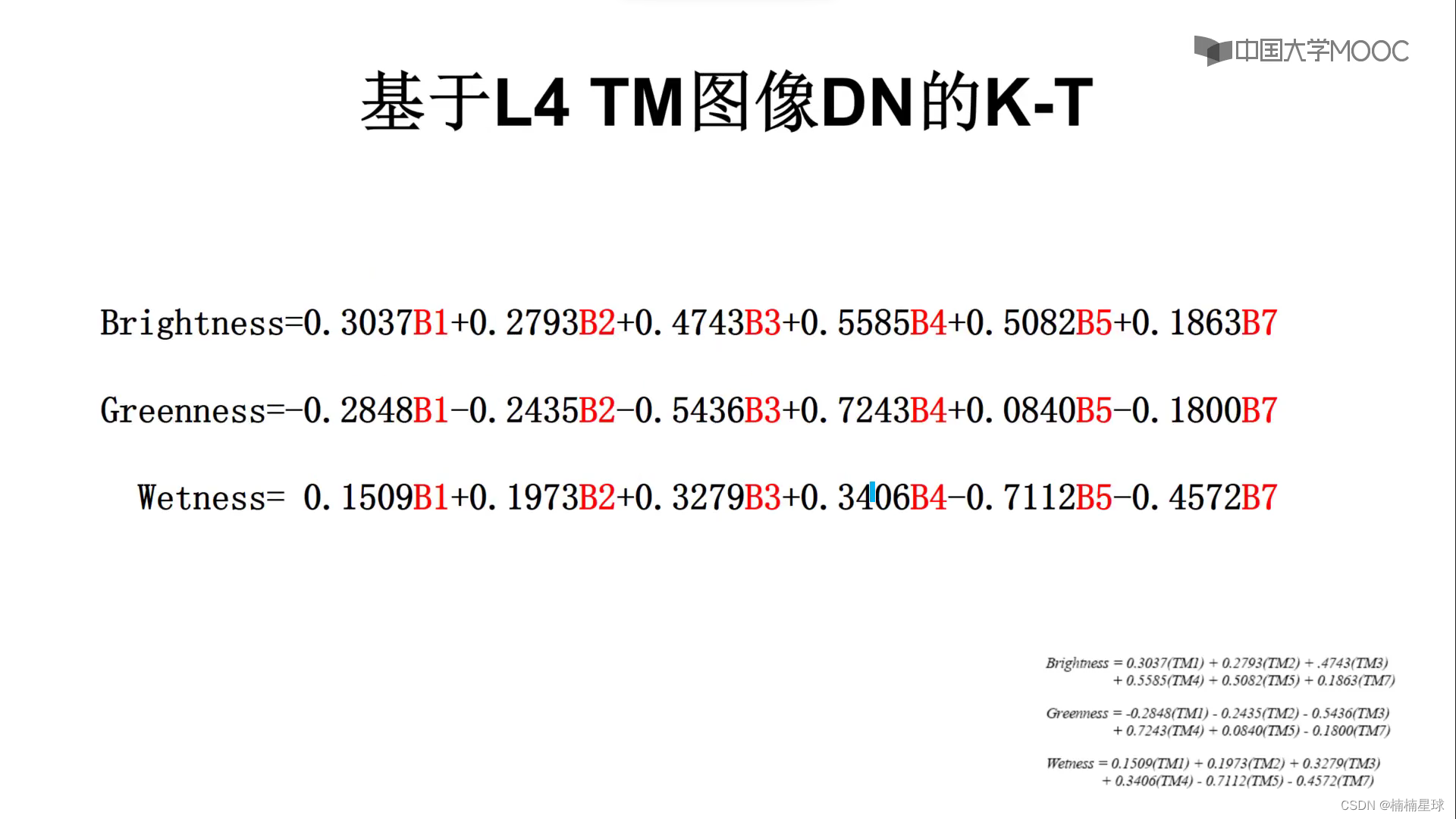
(4)Python程序

# coding=utf-8
#!/usr/bin/env python
# -*- coding:utf-8 -*-
"""
@author: LIFEI
@time: 2023/8/23 13:28
@file: yincat.py
@project: main.py
@describe: CWNU
"""
import os
import cv2 as cv
import numpy as np# 构建缨帽变换的转换系数
compose = [[0.3037,0.2793,0.4743,0.5585,0.5082,0.1863], #对应的亮度分量[-0.2848,-0.2435,-0.5436,0.7243,0.0840,-0.1800], # 对应的植被分量[0.1509,0.1973,0.3279,0.3406,-0.7112,-0.4572]] #对应的湿度分量
compose = np.array(compose) # 将列表转为矩阵# 获取影像数据存储于列表
def get_img_list(path):is_image_file = lambda x : any(x.endswith(extension)for extension in ['tif'])tm = [x for x in os.listdir(path) if is_image_file(x)]tm_list = []for j in range(0,len(tm)):tm_path = path + '/' + tm[j]print('the reading img is:',tm_path)tm_list.append(tm_path)print('Successfully reading')return tm_list# 批量读取矩阵并将其存储于列表
def hat_change(list_path):img_base = []for k in range(0,len(list_path)):# print(list_path[k])# !!!!!一定要记住flags=0,不然会返回三通道img = cv.imread(list_path[k],flags=0)# cv.imshow('tif',img)# cv.waitKey(0)img_base.append(img)return img_base# 缨帽变换
def compose_hat(compose_x,img):res_list = []result_list = []for i in range(0,len(img)):# 获取影像的行列大小row, col = img[i].shape# 将影像转为一维行向量reshape_img = img[i].reshape(row*col)# 传入列表res_listres_list.append(reshape_img)# 波段6不参与,也就是列表的第5行,删除第5行以不参与运算delete_res_list = np.delete(res_list, 5, axis=0)for j in range(0,len(compose_x)):result_data = compose_x[j]@delete_res_list# 判断影像中的空值和0值,用均值代替,防止影像信息缺失for p in range(0,len(result_data)):if result_data[p] == 0 and result_data[p] == None:result_data[p] = np.nanmean(result_data)else:result_data[p] = result_data[p]# 维度转换逆变换,从向量转为二维result_data_data = result_data.astype('uint8').reshape(row,col)# 传给result_listresult_list.append(result_data_data)return result_list# 输出影像
def output(out_path,list):for m in range(0,len(list)):filepath = out_path+'/'+str(m+1)+'.TIF'# cv库写出图像cv.imwrite(filepath,list[m])print('the exporting img is:',filepath)print('Successfully exported!')if __name__ == '__main__':path = "D:/data/result" # 存放TM影像的文件夹路径list = get_img_list(path)img_list = hat_change(list)re_list = compose_hat(compose, img_list)outpath = "D:/data/hat" # 输出路径output(outpath, re_list)
四、现在的发展
随着遥感技术的发展和广泛应用,遥感缨帽变换也得到了进一步的研究和改进。近年来,研究人员结合机器学习、深度学习等技术,提出了一系列基于缨帽变换的新方法,用于地物分类、目标检测、变化检测等应用。同时,缨帽变换在图像处理领域也得到了拓展,可以应用于医学图像分析、遥感图像融合等多个领域。
五、作用
遥感缨帽变换在遥感图像处理中具有广泛的作用。它可以提取地物的空间特征和频谱信息,有助于实现地物的分类、目标检测、变化检测等应用。通过遥感缨帽变换,可以充分利用遥感图像中的信息,





